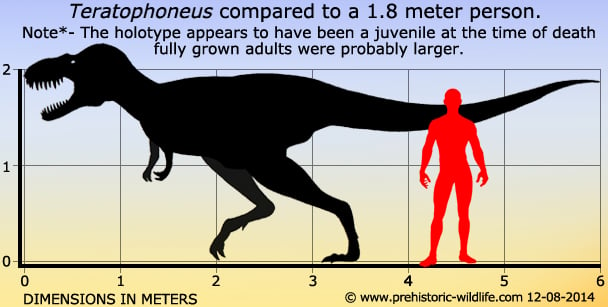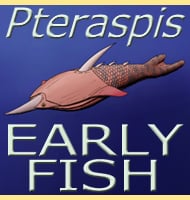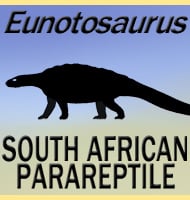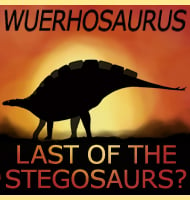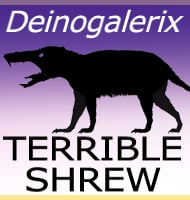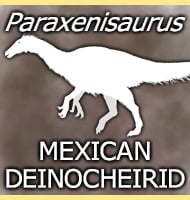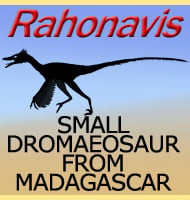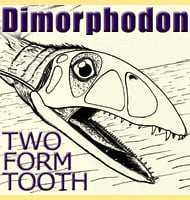In Depth
With a name that translates to English as ‘Monstrous murderer’, Teratophoneus has arguably one of the most apt names of any dinosaur, although the remains suggest that it was smaller than many of the other tyrannosaurids. The species name, T.curriei, is in honour of palaeontologist Philip J. Currie.
Teratophoneus was a very interesting find when it was discovered in Utah. Whereas other tyrannosaurids of the day such as Daspletosaurus were active in the North, Teratophoneus was active in the South. Together with another tyrannosaurid, Bistahieversor, this has pushed the known range of the tyrannosaurids in North America even further.
The skull of Teratophoneus is very interesting as it is very blunt compared to the more typical longer snouts of the tyrannosaurid group. Compared to the skull of an Albertosaurus, Teratophoneus is roughly twenty-three percent shorter in propotion between the lacrimal bone of the orbital fenestra and the tip of the snout. The Skull of Teratophoneus is also comparably deeper. It is unclear if there was a specific reason for these differences, but the extra depth may have allowed for stronger jaw muscles, increasing the bite force of Teratophoneus.
The morphological differences between the southern Teratophoneus and other more well-known tyrannosaurids in the North, suggests that while they are related, they evolved independently from one another. It could be that the mountainous areas of Laramidia and the Western Interior Seaway combined to keep them geographically isolated from their North American brethren, resulting in the differing morphs.
Further Reading
Further reading- Evidence for high taxonomic and morphologic tyrannosauroid diversity in the Late Cretaceous (Late Campanian) of the American Southwest and a new short-skulled tyrannosaurid from the Kaiparowits Formation of Utah. – Naturwissenschaften 98(3):241-246. – T. D. Carr, T. E. Williamson, B. B. Britt and K. L. Stadtman – 2011.
